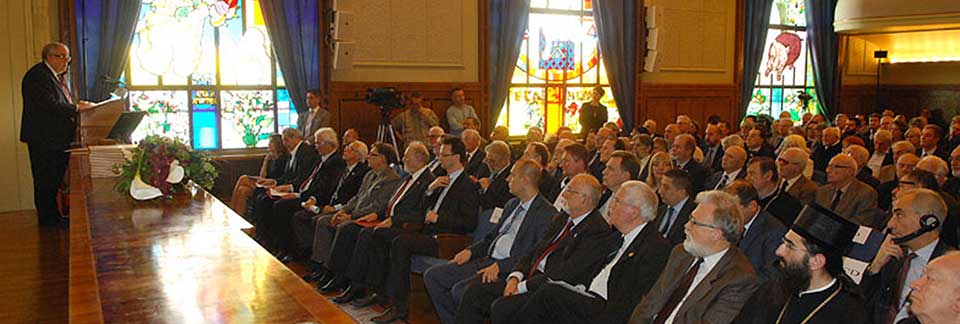In the 180-year long history of the Academy, the total number of members (full, corresponding, honorary, foreign and external) has amounted to 1,481. This number has included several Nobel Prize winners (Ivo Andrić, Vladimir Prelog, Leopold/Lavoslav Ružička, Piotr Leonidovich Kapitsa, Mikhail Aleksandrovich Sholokhov, Aleksandr Isayevich Solzhenitsyn, Czesław Miłosz, Roger Guillemin, Torsten Wiesel), Serbian and global giants of science, such as Nikola Tesla, Mihajlo Pupin, Milutin Milanković, Jovan Cvijić, Dmitri Ivanovich Mendeleev, globally renowned authors (Jacob Grimm, Victor Hugo, Leo Nikolayevich Tolstoy), and prominent artists, such as Antonín Dvořak, Dmitri Dmitrievich Shostakovich, and Henry Moore.
SASA members are elected by the SASA Assembly. Full members are elected by full members and the other members are elected by full and corresponding members. New members are elected every three years. According to the Law on SASA, proposals for the election of full and corresponding members may be submitted by the branches, departments and boards of the Serbian Academy of Sciences and Arts, three SASA members, university senates, academic councils of university schools and art academies, academic councils of military academies, academic councils of institutes, highest management bodies of scientific societies, and associations of artists. The Electoral Assembly takes into consideration only those proposals that have received a two-thirds support from the departments. This ensures the Academy’s independence regarding the submission of proposals and election of candidates. In case a proposal receives the support of just over one half of department representatives, it is nevertheless submitted for voting at the SASA Electoral Assembly, but such candidates are regarded as not having the support of the departments. No proposals that fail to win more than half of department votes are submitted for voting at the Electoral Assembly.
In the past several decades, SASA has had around 150 members, which represents a natural numerus clausus and, accordingly, three situations need to be mentioned. In 1985, the two-year election cycle was replaced with a three-year one, which led to a slowing in the increase in new members, as an almost identical number of them were being elected as before, but now after a three-year interval. In 1991, the Vojvodina Academy of Sciences and Arts merged with SASA, resulting in the addition of 32 new members. The said increase certainly led to a small increase in the number of newly elected members in the following years, whereby the number of members in the early 21st century amounted to 150. Only the year 2003 saw a substantial rejuvenation of SASA, as 27 new members were elected, but this trend did not continue in the ensuing period, when an average of 13 new members were admitted every three years. Currently, SASA has 134 members, 36 corresponding and 98 full members.
The number of corresponding members is slightly declining, whereas the number of the full members is rising, which represents an unfavorable trend. In 1970, the ratio of corresponding to full members was around 60%, much more favorable than in 2016, when the ratio was around 34%.

